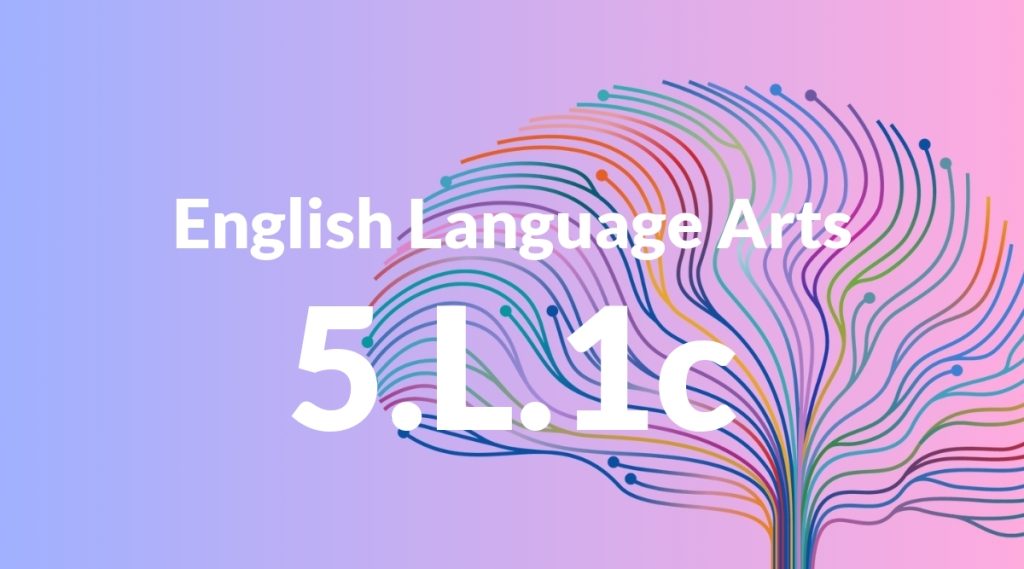Standard: 5.L.1c – Use verb tense to convey various times, sequences, states, and conditions.
Grade level: Grade 5
Subject: English Language Arts
Domain: Language
Teacher Overview
This standard focuses on the use of verb tenses to accurately convey different times, sequences, states, and conditions. Mastery of this standard is crucial as it allows students to communicate more precisely and effectively in both written and spoken language. Students should have a solid grasp of basic verb forms and the ability to identify simple past, present, and future tenses in sentences.
After mastering this standard, students will be able to use more complex verb tenses and aspects to convey detailed and nuanced meanings, improving their overall communication skills.
Common Misconception 1
A common misconception is that verb tense consistency is not important. This is incorrect because inconsistent verb tenses can confuse the reader and disrupt the flow of a narrative or explanation.
Intervention 1
To address this, provide exercises where students practice rewriting sentences and paragraphs to maintain consistent verb tenses.
Common Misconception 2
Another misconception is the confusion between past and present perfect tenses. Students might use these tenses interchangeably, leading to incorrect sentence structures.
Intervention 2
Use timelines and visual aids to illustrate the distinct time frames and conditions each tense represents, and provide practice sentences for students to correct.
Prerequisite Knowledge
Students should have a basic understanding of verbs and their functions in sentences. They should also be familiar with simple past, present, and future tenses.
Subsequent Knowledge
Students will develop the ability to use more complex verb tenses and aspects, such as perfect and progressive tenses, to convey nuanced meanings and relationships between events.
Instructional Activities
- Create a timeline of events in a story and write sentences using the correct tenses.
- Role-play daily routines using different verb tenses.
- Write a diary entry from the perspective of a historical figure, using past tense.
- Plan a future event and describe it using future tense.




